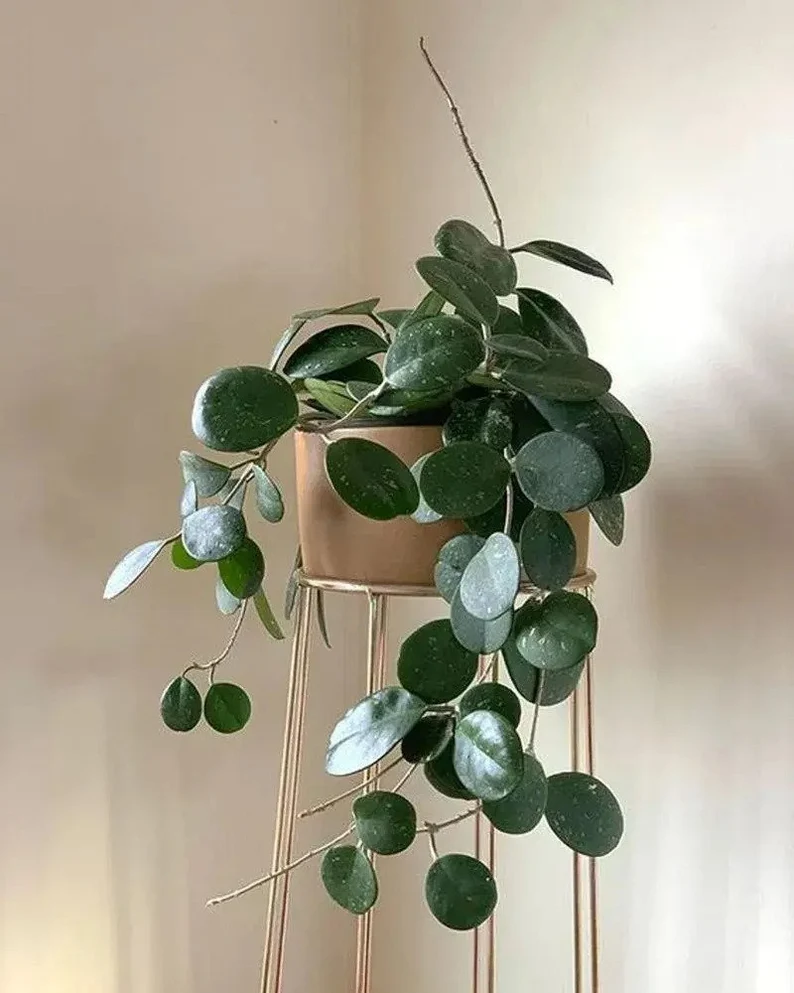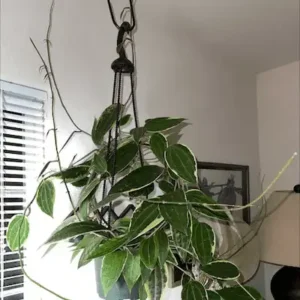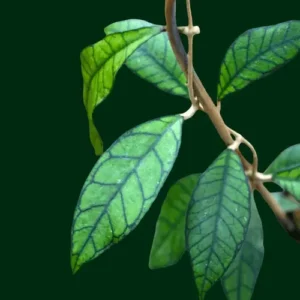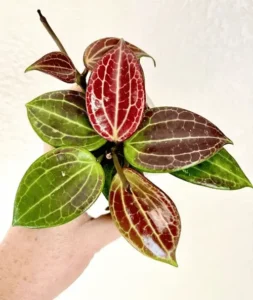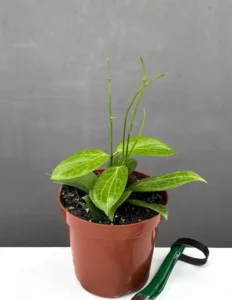Among the many intriguing species in the botanical world, the circular hoya plant, also known as Hoya Obovata or Hoya Kerrii, stands out for its distinctive circular leaves and captivating characteristics. With its unique growth patterns, ability to thrive in various conditions, and strong ornamental appeal, the hoya plant has earned a special place in the hearts of plant enthusiasts around the world.
In this comprehensive exploration, we’ll dive deep into the origins, characteristics, care requirements, propagation methods, and ecological significance of the circular hoya plant, offering valuable insights for both novice plant lovers and seasoned horticulturists.
The Origins of the Circular Hoya Plant
The hoya plant belongs to the Apocynaceae family, a group of flowering plants that are native to tropical and subtropical regions across Southeast Asia, Australia, and the Pacific islands. The genus Hoya consists of over 200 species, but it is the circular-leaved varieties, particularly Hoya Obovata and Hoya Kerrii, that capture the attention of plant enthusiasts with their rounded, fleshy leaves.
The plant’s natural habitat ranges from dense tropical forests to coastal regions. It thrives as an epiphyte (growing on other plants) or a terrestrial vine. Hoyas are climbers by nature, often using their aerial roots to latch onto tree bark or other surfaces. This epiphytic lifestyle allows them to access sunlight in the dense jungle canopy and gain a competitive edge over other plants in their environment.
The circular-leaved hoyas, especially Hoya Kerrii, have earned the nickname “sweetheart hoya”. Their heart-shaped leaves are popular in commercial settings, particularly around Valentine’s Day. However, both Hoya Kerrii and Hoya Obovata are more than just novelty plants. They are complex organisms with rich ecological roles and distinctive adaptations that make them both hardy and visually striking.
Key Characteristics of the Circular Hoya Plant
One of the most defining features of the circular hoya is its leaves. Hoya Obovata is particularly noted for its rounded leaves, which are thick, fleshy, and sometimes speckled with silver markings. These leaves serve a critical function: succulence. Like many plants adapted to warm, dry conditions, the leaves of the hoya act as water reservoirs, helping the plant survive in periods of drought.
The leaves’ circular shape is more than just an aesthetic quirk; it has evolved to help minimize water loss by reducing surface area relative to volume, thereby reducing transpiration. This is particularly advantageous in the plant’s natural tropical environment, where water can sometimes be scarce despite the humidity.
In contrast, Hoya Kerrii, often referred to as the “sweetheart plant,” has heart-shaped leaves, which also display similar characteristics to Hoya Obovata’s in terms of succulence and durability. Both species can produce clusters of star-shaped flowers, which are waxy in appearance and often emit a sweet fragrance, attracting pollinators like bees and moths in their native habitats.
One particularly appealing aspect of hoyas is their longevity. Given the right care and environment, a hoya can live for many years, producing blooms regularly once it reaches maturity. The plant’s epiphytic nature means that it doesn’t demand large amounts of soil to thrive, making it an excellent choice for small living spaces where it can be grown in hanging baskets or trellised pots.
Ideal Growing Conditions for the Circular Hoya Plant
The circular hoya is relatively easy to care for, making it an excellent choice for both beginners and experienced plant collectors. Its hardy nature and adaptability mean it can tolerate various growing conditions, but there are specific factors to consider for optimal growth and blooming.
Light Requirements
Provide bright, indirect sunlight
As an epiphyte, the hoya naturally grows in filtered light, beneath the canopy of taller trees. When cultivated indoors, the plant thrives in bright, indirect light. Direct sunlight can scorch the fleshy leaves, so it’s best to position the plant near a window that provides filtered sunlight or in a well-lit room. However, in low-light conditions, growth may slow, and the plant might struggle to produce its characteristic blooms.
Watering and Humidity
Moderate watering
One of the most important aspects of caring for a hoya is moderate watering. These plants prefer to dry out between waterings, mimicking the natural cycles of rain and drought they experience in the wild. Overwatering can lead to root rot, a common issue with many succulent plants. It’s essential to allow the top inch or two of the soil to dry out completely before watering again.
Provide sufficient humidity
In addition to proper watering, humidity plays a crucial role in a hoya’s health. Being native to tropical regions, hoyas thrive in environments with higher humidity levels (60-80%). While they can tolerate average household humidity, increasing humidity—through misting or placing the plant near a humidifier—can encourage healthier growth and more frequent blooms.
Soil and Fertilization
Hoyas prefer well-draining soil mix
Hoyas prefer a well-draining soil mix, similar to what you’d use for orchids or other epiphytic plants. A mix that combines orchid bark, perlite, and peat moss works well, providing both drainage and aeration for the roots. It’s essential to avoid dense, water-retentive soil, which can lead to root rot.
Balanced fertilizer
As for fertilization, hoyas are not heavy feeders. During the growing season (spring and summer), a balanced, water-soluble fertilizer can be applied monthly to encourage growth. However, during the winter months, when the plant is in a dormant phase, it’s best to withhold fertilizer to avoid overstimulating growth.
Propagation Methods for the Circular Hoya Plant
Propagating hoyas is relatively straightforward and can be accomplished through a few different methods, depending on the grower’s preference and experience level.
Stem Cuttings
The most common method of propagation is through stem cuttings.
Steps to propagate a hoya via stem cuttings
To propagate a hoya via stem cuttings, follow these steps:
- Select a healthy, mature plant and choose a stem with at least two or three leaves.
- Using clean, sharp scissors or pruning shears, cut the stem just below a node (the point where the leaves join the stem).
- Allow the cutting to dry for a few hours to form a callus over the cut end.
- Place the cutting in a well-draining potting mix or water, ensuring the node is submerged in either the soil or water.
- Keep the cutting in a warm, humid environment with bright, indirect light.
- Roots should begin to form within a few weeks, after which the cutting can be transferred to a pot if it was started in water.
Leaf Cuttings
Hoya Kerrii, in particular, is sometimes propagated using leaf cuttings. However, this method can be deceptive, as a single leaf (often sold commercially) can take a very long time to develop into a full plant, if at all. To increase the chances of successful propagation, ensure that the leaf cutting includes a portion of the stem or a node, as this is where new growth will originate.
Ecological Role and Symbolism
Ecological role of hoya circular plant
In their native habitats, hoya circular plants play a vital role in the ecosystem by providing nectar to various pollinators, including bees, moths, and butterflies. The sweet fragrance of hoya flowers attracts these creatures, facilitating pollination. Hoya plants also serve as host plants for certain species of caterpillars, contributing to the biodiversity of tropical ecosystems.
Symbolism of hoya circular plant
In addition to their ecological significance, hoyas have taken on a symbolic role in human culture, particularly the Hoya Kerrii, which is often gifted as a token of love and affection. Its heart-shaped leaves have made it a popular choice for Valentine’s Day and romantic occasions, symbolizing enduring love and commitment.
Common Pests and Problems
Mealybugs, spider mites, and aphids
While hoyas are generally hardy plants, they can occasionally fall prey to pests such as mealybugs, spider mites, and aphids. Regular inspection of the leaves and stems is essential to catch infestations early. If pests are detected, they can often be removed by wiping the affected areas with a cloth dipped in a mixture of water and mild soap or using neem oil as a natural pesticide.
Overwatering
Overwatering is another common issue, leading to root rot or fungal infections. Ensuring proper drainage and allowing the soil to dry out between waterings can help prevent these problems.
| FAQs Is Hoya obovata fast-growing? During spring and summer, hoya obovata needs fertilization twice a month. It is a fast-growing hoya plant. For high growth of the hoya obovata, use a fertilizer that is rich in nitrogen. In short, use a balanced fertilizer. What is the common name for Hoya Obovata? Wax plant, Porcelain flower, Honey plant Is Hoya obovata poisonous? Hoya obovata produces a milky sap laden with latex and is considered a toxic wax plant. However, the toxicity level depends upon the hoya species and the size of the animal that ingests the leaves. |
Conclusion
The circular hoya plant, with its distinctive leaves, fragrant blooms, and hardy nature, is a botanical treasure. Its adaptability makes it an excellent choice for both novice and experienced plant enthusiasts, while its unique form and function offer endless appeal as an ornamental plant. Whether grown as a climbing vine or in a hanging basket, the circular hoya can bring a touch of the tropics into any home, offering beauty, resilience, and a touch of ecological intrigue.
For those seeking a long-lasting, low-maintenance plant with a distinctive aesthetic, the circular hoya is a perfect choice, blending beauty with a fascinating botanical story. Whether you’re drawn to its charming leaves, fragrant blooms, or its unique role in nature, the hoya plant promises to be a delightful addition to any plant collection.

